
Would you ever guess that the cake in the photo below was made with broken cake layers? It’s so frustrating when cake layers crack or crumble but here’s an easy hack to make them usable. I'll also show you why cake layers break and how to prevent it happening.

To watch a video version of this tutorial instead, scroll to the bottom of the page.
WHY do cake layers break?
Straight out of the oven, cakes are very delicate because they firm up as they cool. If you turn the pans over straight away, the cakes can fall apart or crack or crumble as they fall out of the pans. If you wait until the cakes cool and only then turn the pans over, the cakes can stick to the pans and you’ll find chunks of cake stuck to the bottom of the pans and big holes in your cakes!

How can you prevent cakes from cracking and crumbling in the first place?
There are three ways.
First, check your pans before you use them to make sure they aren’t scratched or dented. Scratches in the non-stick surface of the pans will open up areas where the cake can stick, and dents mean that a pan is no longer perfectly round, so the cake can’t slide straight out of the pan.
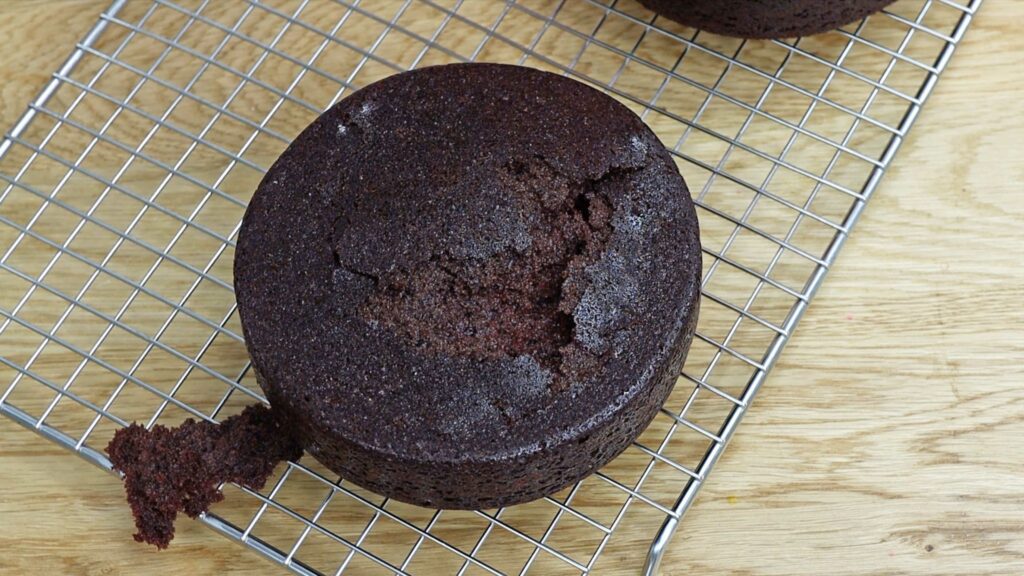
Second, always grease your pans before pouring batter into them, using butter or oil or a non-stick spray, and you can dust the pans with flour too if you like. Or to be extra safe you can line them with parchment paper, tracing around the pans onto the paper and then cutting those circles out and putting them in the bottom of the pan for the easiest, neatest turning out of cakes.
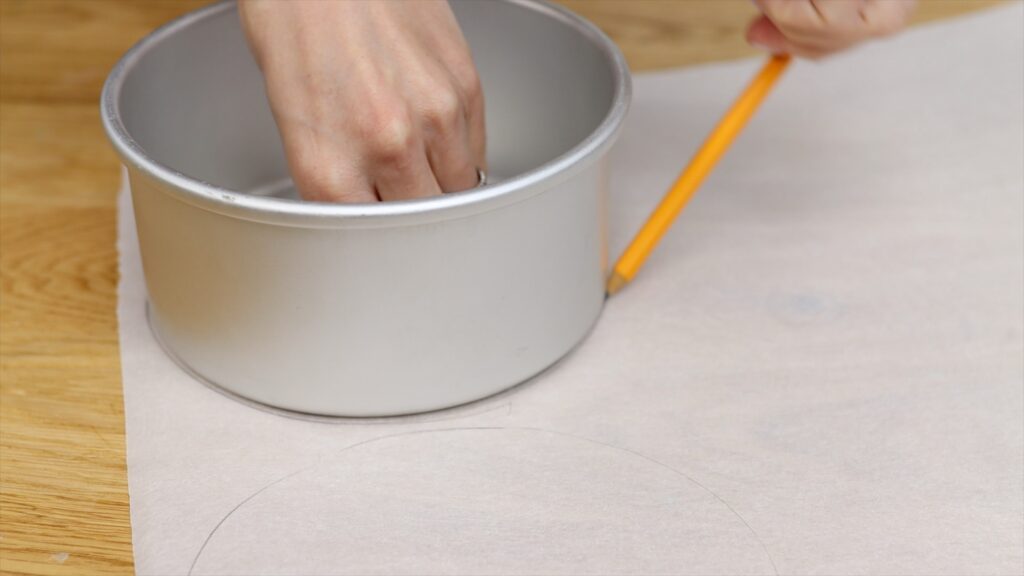
Finally, after the cakes come out of the oven, wait about 10 minutes before you turn them out. Keep poking the pans to check the temperature and as soon as you can lift the pans up with your bare hands without burning yourself, the cakes are cool enough!
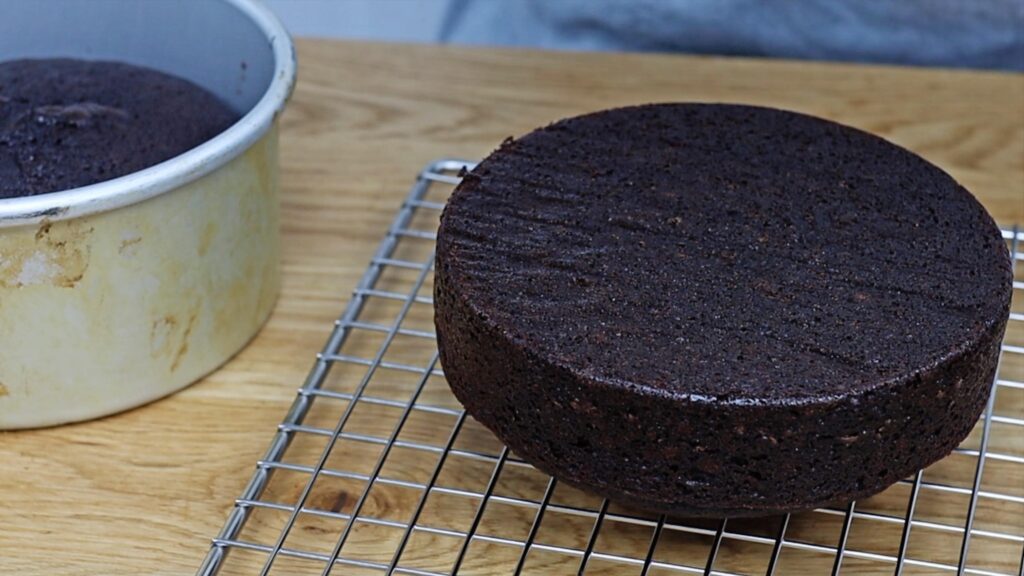
How can you fix broken cake layers so you can use them for your cake?
Now for the part you’ve been waiting for! After taking cakes out of the oven, let the layers cool completely and then wrap them up tightly in cling film or Saran Wrap and put them in the freezer for 2 hours or overnight. The pieces will freeze together, which makes them much easier to handle.

Assemble your cake with buttercream as the filling because buttercream acts as glue when it sets. Be generous with the filling because it will sink into any cracks or gaps and fill those in to make the cake level and stable. Alternate your cake layers and filling, and since the layers were frozen they’ll chill and set the buttercream filling within a few minutes, and that buttercream once it’s set will hold everything together like glue.
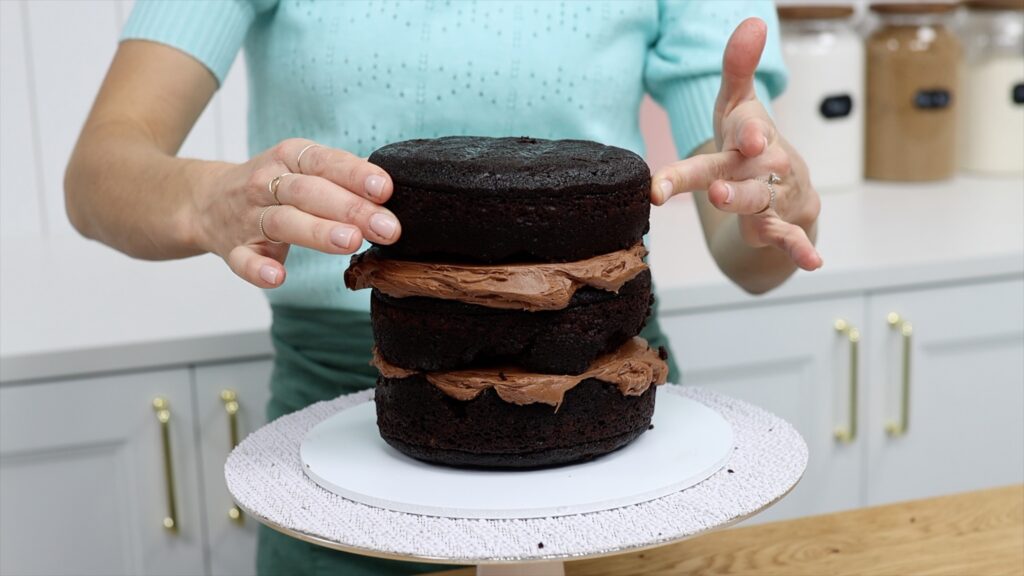
Flatten the sides of the filling if it’s bulged out, by spreading it against the sides of the cake and that will fill in any gaps there to make nice straight sides. A crumb coat is essential if your cake layers are broken because this first layer of frosting, called a crumb coat, will catch any crumbs that come off the cake and then chill the cake for 30 minutes in the fridge or 15 minutes in the freezer.
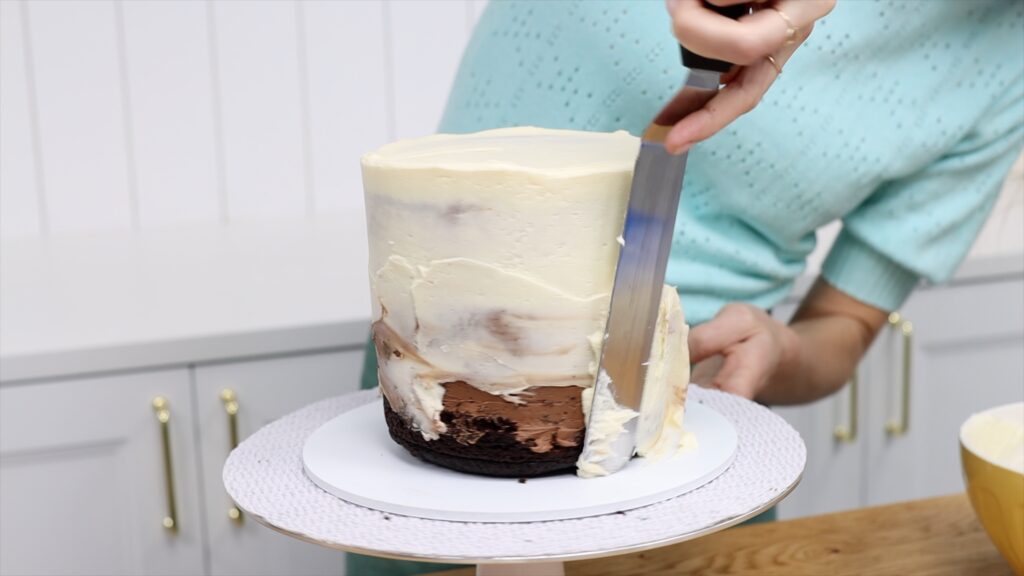
Spread on your final layer of frosting, and since the crumb coat has been chilled, this final coat will sit on top of it and none of the crumbs from the crumb coat will get through into this layer of frosting so you’ll have beautiful, crumb-free frosting and a straight, level cake and even when you cut into it, no one will ever know how ugly the cake layers were originally!

Sign up for my free course and newsletter for more cake hacks, recipes, tips and tutorials and visit my cake school for online cake decorating courses and Live Workshops!
You can also watch a video version of this tutorial on How to Fix Broken Cake Layers:
